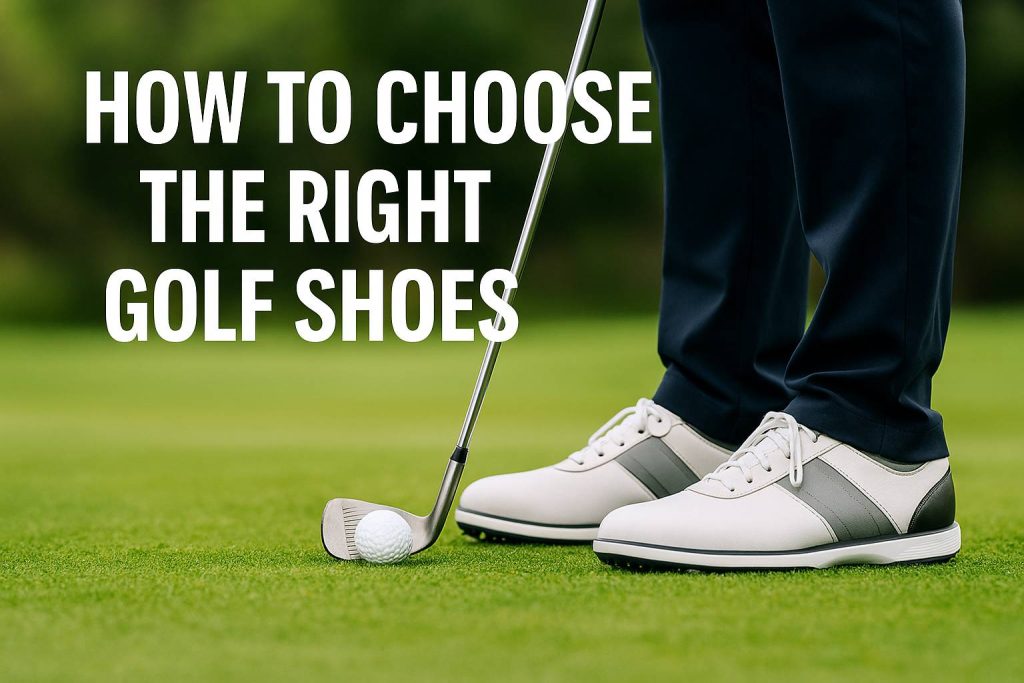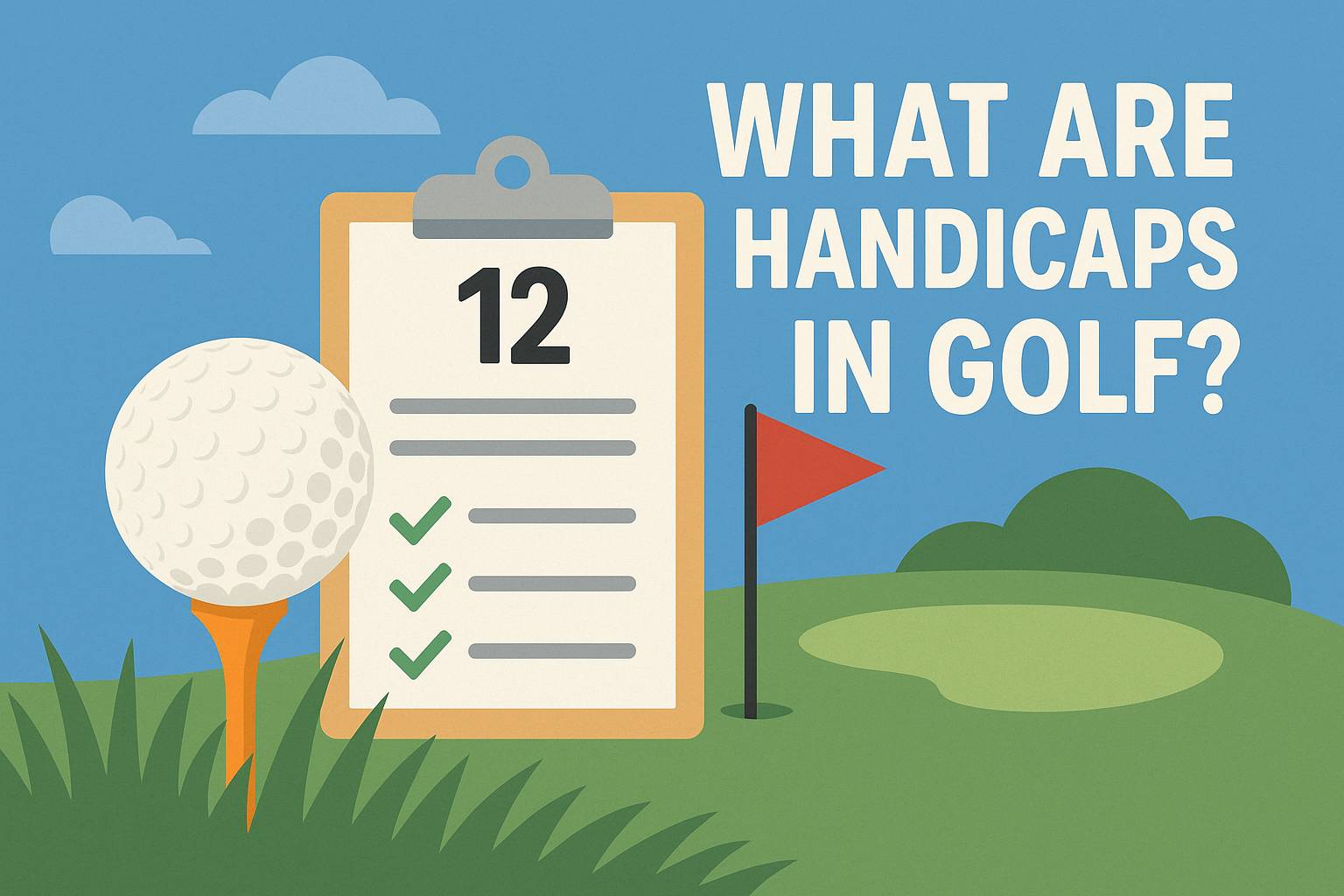Golf is a sport that demands not only technical precision and mental calm, but also physical readiness and comfort throughout the round. One critical yet often overlooked factor by beginner golfers is choosing the right pair of golf shoes. Unlike regular sports shoes, golf shoes are specially designed to handle a variety of course terrains—from flat fairways and uneven roughs to sandy bunkers.

Therefore, it’s essential to understand the aspects that should be considered before purchasing golf shoes. This article from GoGolf provides an in-depth guide on how to choose the best golf shoes that match your playing style and course conditions.
1. Consider the Shoe Material: Leather or Textile?
The material of golf shoes is one of the primary considerations when shopping for a pair. Generally, there are two main categories available on the market: leather shoes and textile/synthetic mesh shoes that resemble sneakers.
Leather Golf Shoes
Leather golf shoes have a more elegant and professional appearance. Their main advantages include water resistance and durability in damp weather conditions. In addition, leather tends to last longer, is easy to clean, and offers a premium look—making them suitable for official games and tournaments.
However, leather shoes are usually heavier and offer less breathability. This can be problematic if you’re playing for extended periods or in hot weather, as your feet may become sweaty and uncomfortable.
Mesh or Textile Golf Shoes
This type offers a higher level of comfort due to its lightweight design and superior ventilation. They’re ideal for casual games, driving range sessions, or hot weather conditions. However, these shoes typically lack water resistance, making them less suitable for rainy days or wet turf.
Choosing the right shoe material should depend on your playing style, typical weather conditions, and frequency of use. Golfers who play regularly in various situations are advised to have more than one pair to suit different needs.
2. Choose the Right Sole Type for Your Game
The sole of a golf shoe is a crucial element that determines both stability and comfort during play. Typically, modern golf shoes feature either soft spikes or spikeless soles.
Soft Spikes: Stronger Traction for Beginners and Professionals
Soft spike soles are equipped with removable rubber or plastic cleats. They offer excellent grip, helping to maintain body position during swings—especially on wet or uneven terrain.
Shoes with this sole type are highly recommended for beginners as they offer extra stability, reduce the risk of slipping, and help maintain proper posture. However, soft spikes may feel less comfortable when walking on non-course surfaces like concrete or hard floors.
Spikeless: Lightweight and Flexible
Spikeless shoes don’t use cleats but instead feature rubber grip patterns on the outsole. While the grip isn’t as strong as that of soft spikes, spikeless shoes are significantly lighter, more flexible, and more comfortable for long walks.
They’re ideal for golfers playing in dry conditions or on firm, stable courses. Spikeless golf shoes also have a more fashionable look and can be worn off-course without appearing out of place.
Still, it’s important to note that whether spiked or spikeless, golf shoes should not be used as daily footwear. Using them outside their intended purpose will accelerate sole wear and reduce grip performance on the course.
3. Pick the Right Size and Fit for Your Foot Shape
Comfort when wearing golf shoes depends heavily on the size and fit relative to your foot shape. Shoes that are too tight can cause pain, blisters, or even injury, while shoes that are too loose can affect balance during swings.
It is advisable to try on golf shoes in person before purchasing, especially if you plan to wear them for long durations. Choose a size that offers a bit of room in the toe box and heel, so the shoes don’t feel tight when your feet swell after walking long distances.
An ideal size also provides optimal support for the arch and ankles. Some brands even offer wide-fit versions for players with broader feet.
Extra Tips:
- Try shoes in the afternoon when feet tend to swell.
- Wear your usual golf socks when trying on shoes.
- Ensure the heel fits snugly while the toe area remains pressure-free.
[ Also Read: 5 Key Criteria for High-Quality Golf Shoes ]
4. Consider Extra Features: Waterproofing, Dial Systems, and Sole Technologies
With technological advancements, today’s golf shoes come with various added features that enhance both comfort and functionality.
Dial Systems (BOA System)
This feature replaces traditional laces with a quick-turn dial that allows precise and instant adjustment of tightness. It’s perfect for golfers who prefer convenience and want to avoid retying laces during a round.
Waterproof Layer
Golf shoes with waterproof membranes are highly recommended for rainy days or damp courses. Water-resistant materials keep your feet dry and warm, preventing discomfort or blisters caused by wet conditions.
Advanced Sole Technologies
Some manufacturers include cushioning systems such as EVA foam, dual-density midsoles, or orthopedic insoles to boost comfort and reduce foot pressure. This is especially important for players who often play long rounds or have specific foot posture needs.
Conclusion
Choosing the right golf shoes isn’t just about style—it directly affects your comfort, safety, and performance on the course. By considering the shoe material, sole type, correct sizing, and added features, you can find a pair that truly supports your game.
Remember, golf shoes are a long-term investment. Spending a little more time to find the best model will significantly improve your playing experience. Make sure you wear shoes that not only enhance your appearance but also provide maximum support with every step and swing.
[ Follow our social media Account: GoGolf Instagram | GoGolf Facebook | GoGolf X ]











